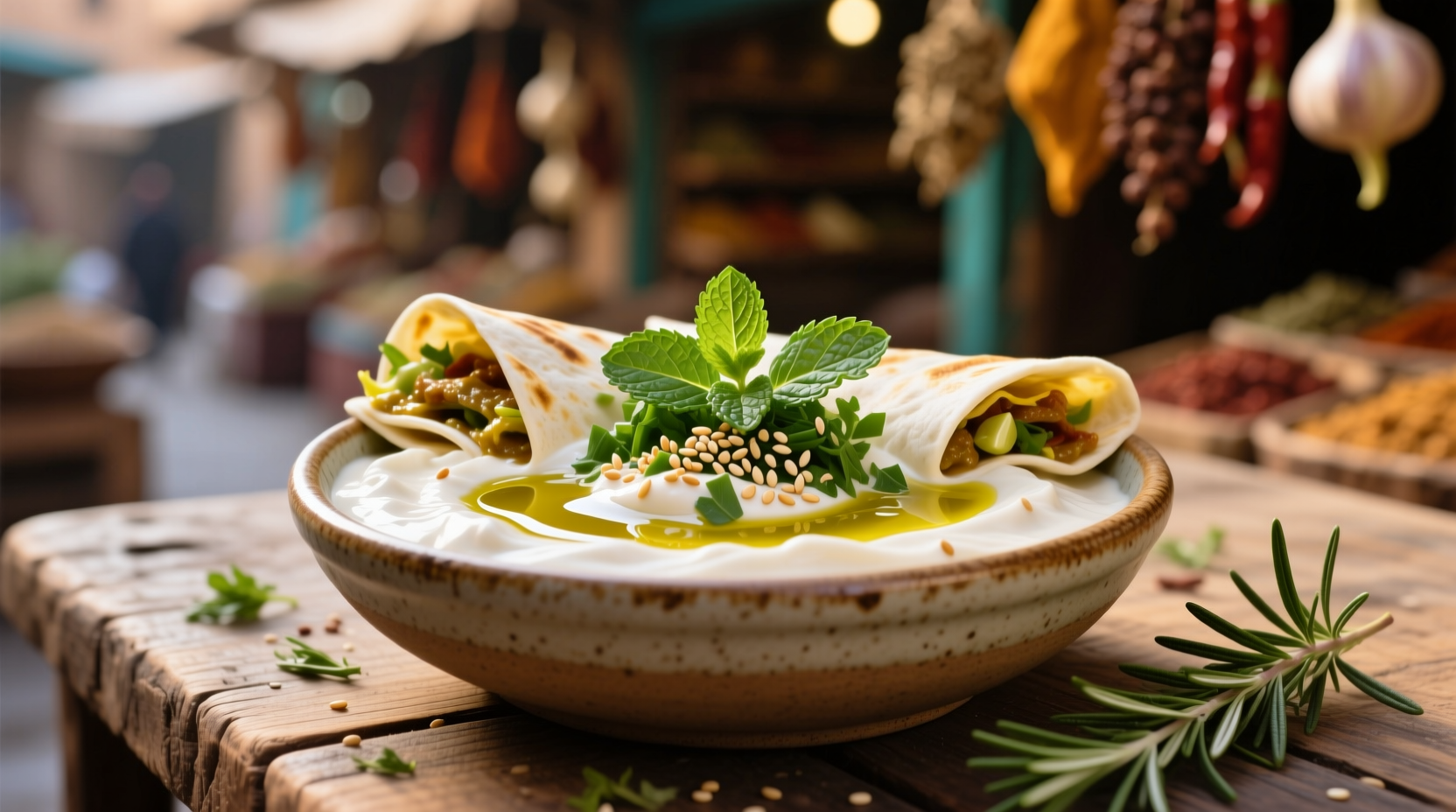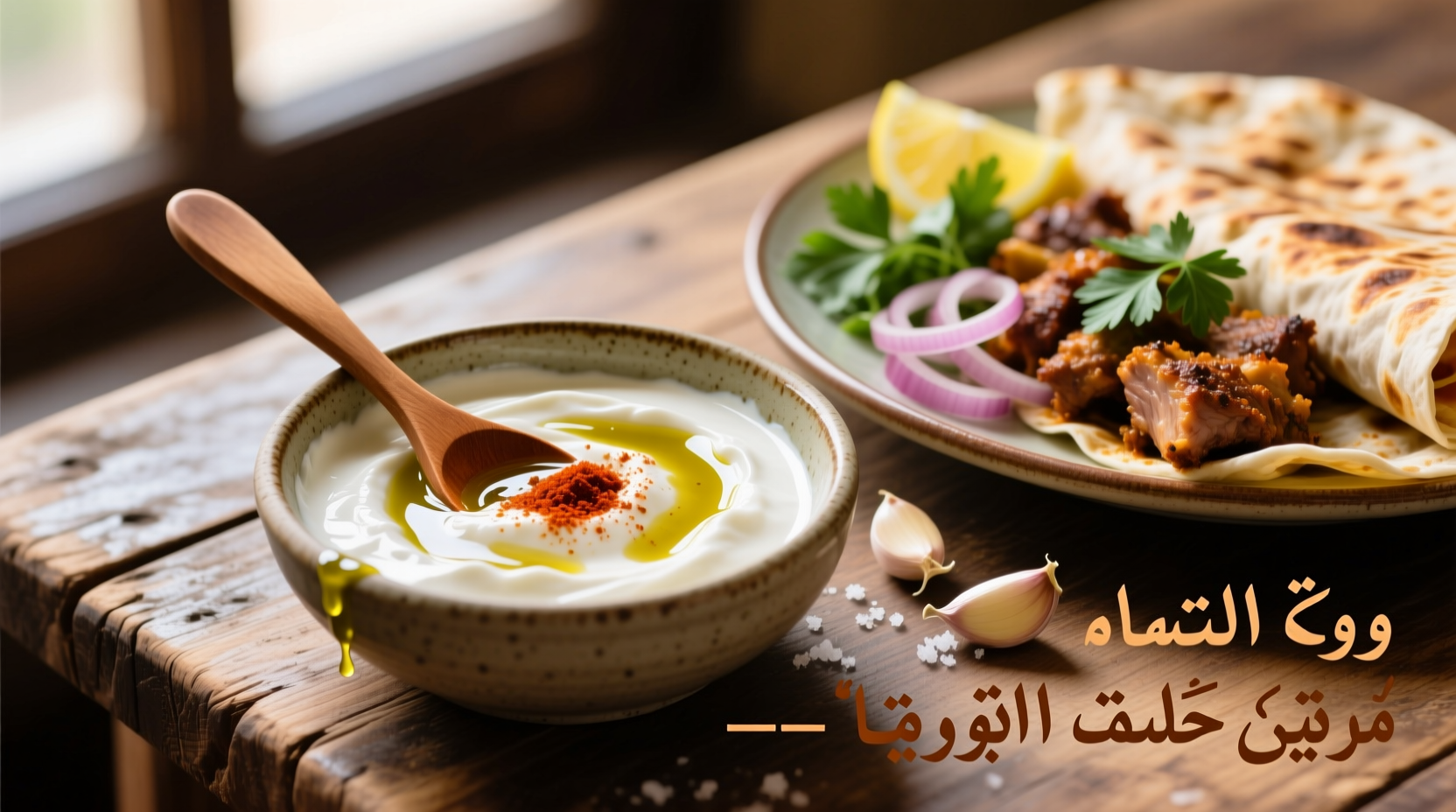Here's the authentic shawarma garlic sauce recipe you need: Combine 1 cup tahini paste, 4-5 garlic cloves (minced), 1 lemon (juiced), 1 tsp cumin, 1 tsp salt, and 1/2 cup ice water. Whisk until smooth and creamy. This traditional Middle Eastern sauce takes 10 minutes to prepare and serves 6-8. Perfect for chicken or lamb shawarma, falafel, or as a dip.
Craving that creamy, garlicky sauce that transforms ordinary shawarma into an extraordinary meal? You've found the right place. This authentic shawarma garlic sauce recipe delivers the perfect balance of tangy, creamy, and pungent flavors that define Middle Eastern street food. Unlike store-bought versions loaded with preservatives, this homemade version uses simple, wholesome ingredients you probably already have in your kitchen.

Why This Garlic Sauce Recipe Works
Traditional shawarma garlic sauce, known as ta'ameya or thoom in Arabic, has been perfected over centuries across the Levant region. The magic happens through proper emulsification - when tahini, lemon juice, and water combine correctly, they transform from separate ingredients into a velvety, stable sauce that won't separate. This isn't just culinary tradition; food science confirms that the proteins in tahini bind with the acids in lemon juice to create this stable emulsion.
| Regional Variation | Key Differences | Best Paired With |
|---|---|---|
| Lebanese Style | More lemon, less garlic, smooth texture | Chicken shawarma, grilled vegetables |
| Syrian Style | Added mint, slightly thicker | Lamb shawarma, fattoush salad |
| Palestinian Style | More garlic, includes yogurt | Falafel, shawarma sandwiches |
| Israeli Style | Mayo-based, milder garlic | Doner kebab, sabich |
According to culinary historian Claudia Roden's research documented in The Book of Jewish Food, garlic sauces have been essential to Middle Eastern cuisine since the Ottoman Empire era, with regional variations developing based on local ingredients and cultural influences. The Palestinian version with yogurt emerged as a practical adaptation in regions where dairy was more accessible than tahini.
Your Step-by-Step Preparation Guide
Prep Phase: Getting Ingredients Ready
Before you start mixing, proper ingredient preparation makes all the difference. Mince your garlic finely - using a microplane creates the most intense flavor release. Squeeze your lemon fresh; bottled juice lacks the bright acidity needed for proper emulsification. Measure your ice water - the cold temperature helps the emulsion form correctly.
Mixing Phase: Creating the Perfect Emulsion
- Place tahini in a medium bowl and whisk in lemon juice - it will thicken initially
- Gradually add ice water while whisking constantly until smooth
- Add minced garlic, cumin, and salt
- Continue whisking until sauce reaches a creamy, pourable consistency
- Taste and adjust seasoning - authentic sauce should have a pronounced garlic kick
Food safety note: The USDA Food Safety and Inspection Service recommends using homemade garlic sauces within 5 days when stored properly in the refrigerator. Raw garlic in oil-based mixtures can potentially create conditions for botulism if stored too long at room temperature.
Troubleshooting Common Sauce Problems
Problem: Sauce is too thick or paste-like
Solution: Add ice water, one tablespoon at a time, while whisking until desired consistency is reached. The sauce should coat the back of a spoon but still flow slowly.
Problem: Sauce has separated or looks curdled
Solution: Start with a fresh bowl and a teaspoon of tahini. Slowly whisk in the broken sauce, a few drops at a time, until it re-emulsifies. This technique works because you're essentially creating a new emulsion base.
Problem: Garlic flavor is too harsh or bitter
Solution: Let the sauce rest for 30 minutes before serving. The flavors will mellow as they meld. Alternatively, add a pinch of sugar to balance the bitterness.
Variations for Different Dietary Needs
Vegan Option: This traditional recipe is naturally vegan. Ensure your tahini is 100% sesame paste without added oils.
Dairy-Free Alternative: Some versions use yogurt, but this tahini-based recipe is completely dairy-free while maintaining creaminess.
Lower Fat Version: Replace half the tahini with Greek yogurt for a lighter texture while maintaining creaminess.
Extra Creamy Version: Add one boiled potato (peeled and mashed) for an ultra-smooth texture that stays stable longer.
Serving Suggestions That Elevate Your Meal
This garlic sauce isn't just for shawarma! Try these authentic serving methods:
- Drizzle generously over freshly grilled chicken or lamb shawarma
- Use as a dip for warm pita bread or fresh vegetables
- Spread inside shawarma wraps before adding meat and vegetables
- Mix with chopped parsley for a vibrant garnish on grilled meats
- Thin with additional water for a salad dressing over fattoush
In Middle Eastern households, the quality of garlic sauce often determines whether a shawarma meal is considered successful. The sauce should complement, not overpower, the spiced meat. When served with freshly grilled shawarma, the warm meat slightly melts the cool sauce, creating that perfect flavor harmony street food lovers seek.
Storage and Shelf Life Tips
Store your homemade shawarma garlic sauce in an airtight container in the refrigerator for up to 5 days. The cold temperature slows oxidation and bacterial growth. For best results:
- Press plastic wrap directly onto the sauce surface before sealing to prevent browning
- Stir well before using if separation occurs (normal with natural ingredients)
- Do not freeze - the emulsion will break and texture will become grainy
- Always use clean utensils to prevent contamination
Remember that authentic Middle Eastern garlic sauce should have a vibrant, slightly tangy flavor with a noticeable garlic presence. If your sauce tastes flat, add a pinch more salt and a squeeze of fresh lemon juice to revive the flavors before serving.
Frequently Asked Questions
Can I make shawarma garlic sauce without tahini?
Yes, you can create a yogurt-based alternative by combining 1 cup plain yogurt, 3-4 minced garlic cloves, 1 tablespoon lemon juice, and 1 teaspoon salt. While different from traditional tahini-based sauce, this version still delivers authentic flavor. For best results, use full-fat yogurt and let the mixture rest for 30 minutes before serving to allow flavors to meld.
Why does my garlic sauce taste bitter?
Bitterness usually comes from either over-processing garlic (which releases bitter compounds) or using old, oxidized tahini. To fix bitter sauce, add a pinch of sugar and more lemon juice to balance flavors. For future batches, mince garlic finely by hand rather than using a food processor, and always check your tahini's freshness before using.
How can I make my garlic sauce creamier without adding more tahini?
For extra creaminess without additional tahini, try adding a small boiled potato (about 1/4 cup mashed) to your sauce. The potato's starch creates a velvety texture while maintaining the authentic flavor profile. Alternatively, let your sauce rest for 2 hours before serving - the ingredients naturally thicken and emulsify further over time.
What's the difference between shawarma garlic sauce and toum?
While both are garlic-based sauces, shawarma garlic sauce typically contains tahini and lemon juice, creating a creamy, nutty flavor. Toum is a Lebanese garlic sauce made primarily with garlic, oil, and lemon juice, resulting in a sharper, more intense garlic flavor with a mayonnaise-like texture. Shawarma sauce complements spiced meats better, while toum stands up to stronger flavors like grilled chicken or fish.
Can I prepare this sauce in advance for a party?
Absolutely! This sauce actually improves when made 24 hours in advance. The flavors meld and the garlic mellow slightly, creating a more balanced taste. Store in an airtight container with plastic wrap pressed directly onto the sauce surface to prevent oxidation. Stir well before serving, and consider adding a final squeeze of fresh lemon juice to brighten the flavors.











 浙公网安备
33010002000092号
浙公网安备
33010002000092号 浙B2-20120091-4
浙B2-20120091-4